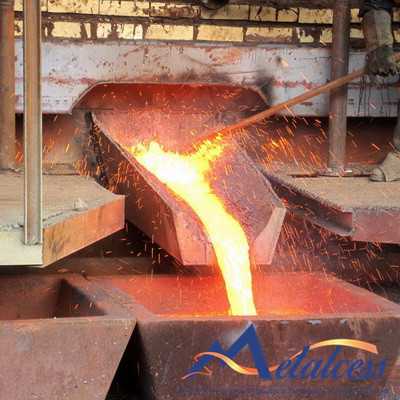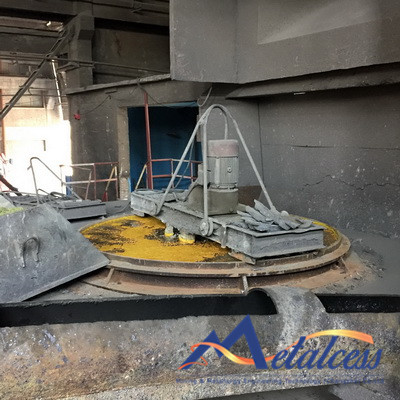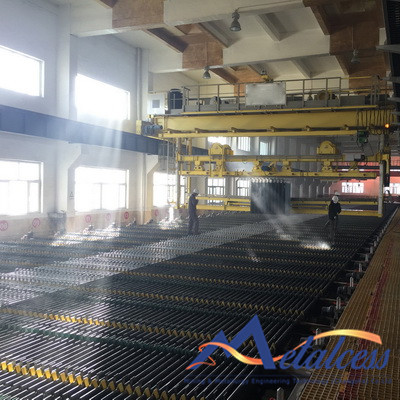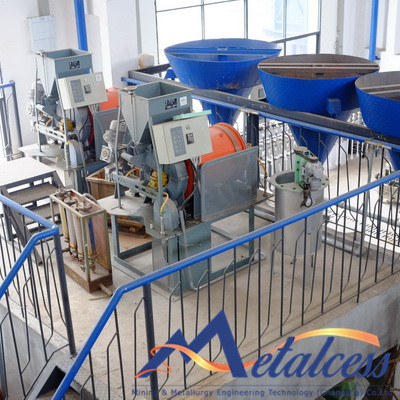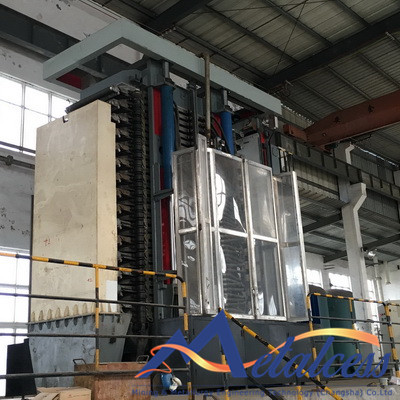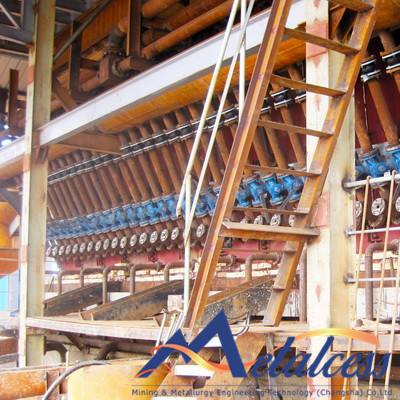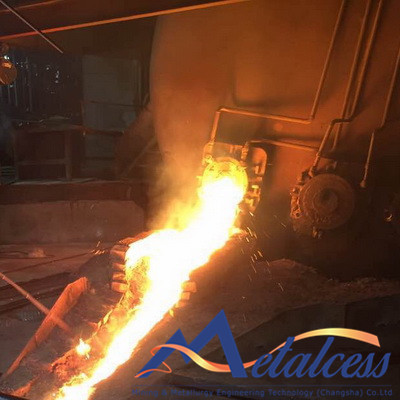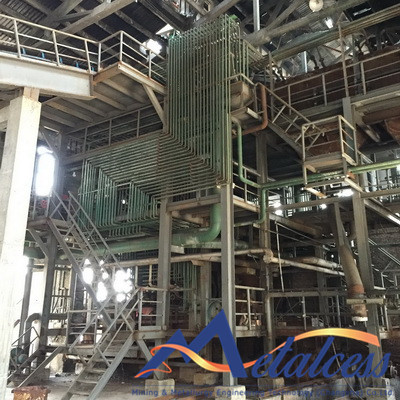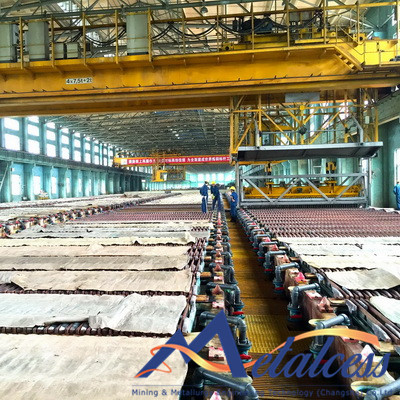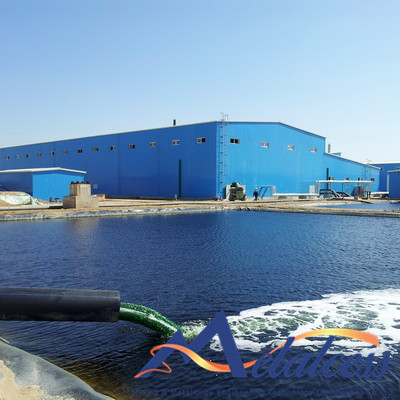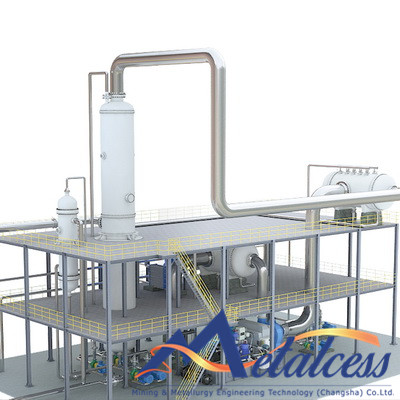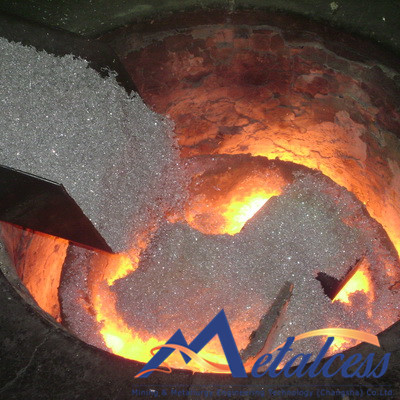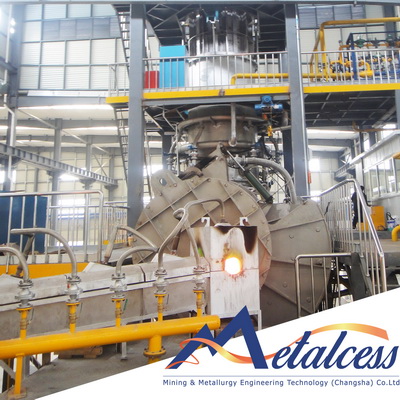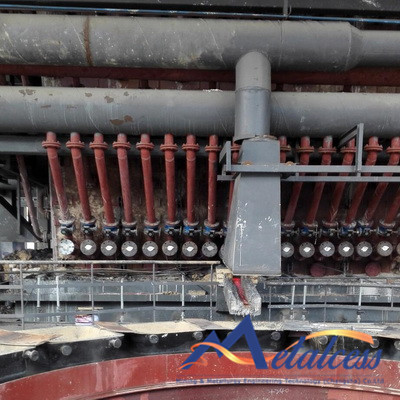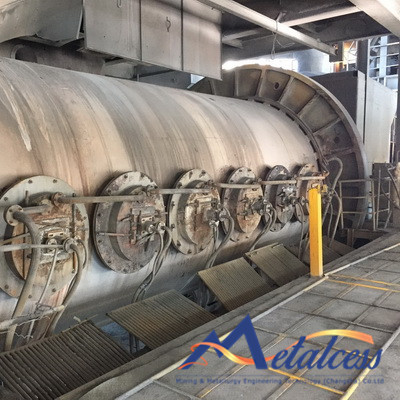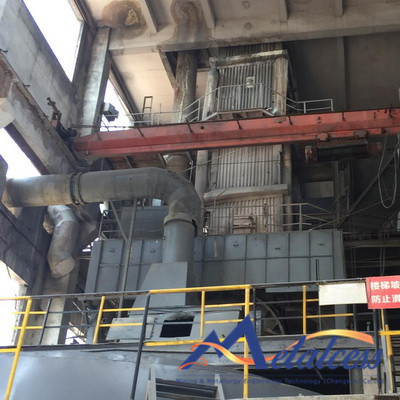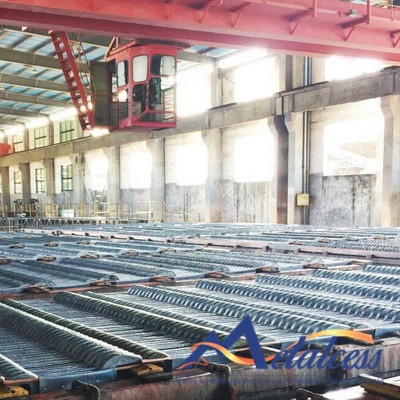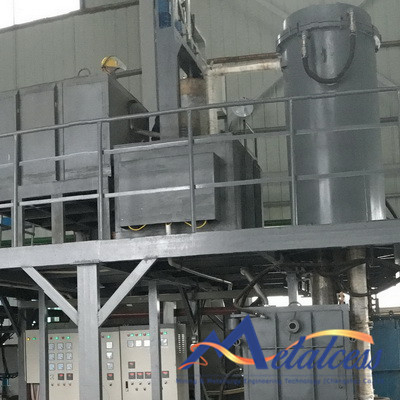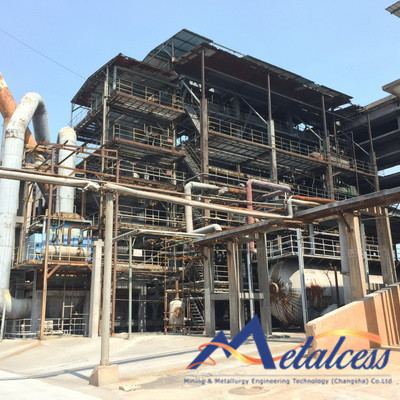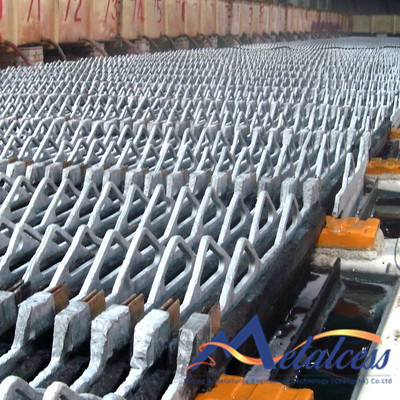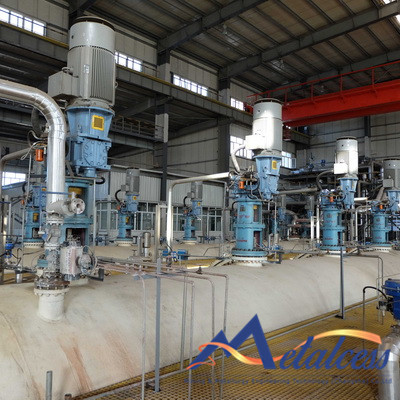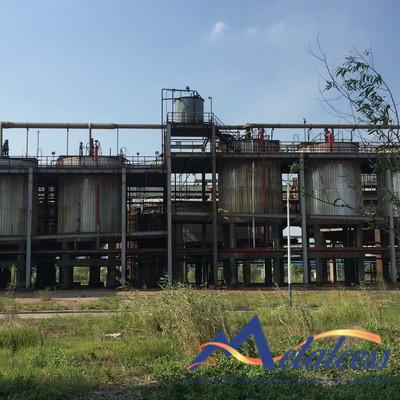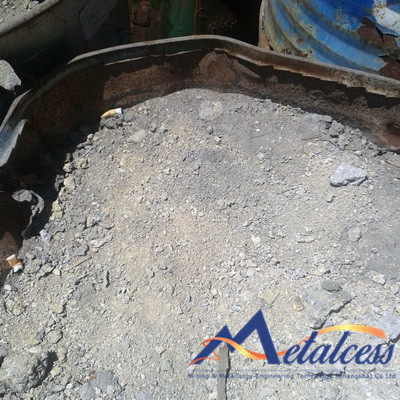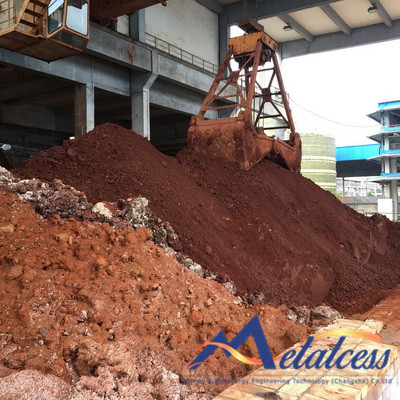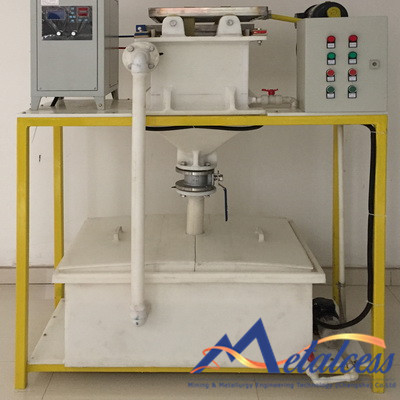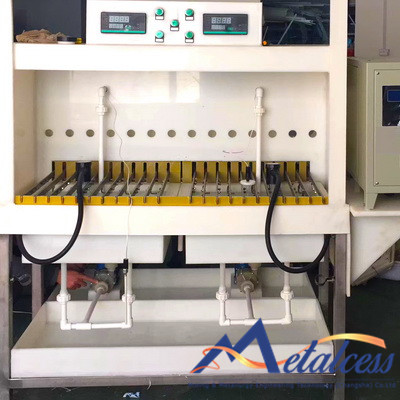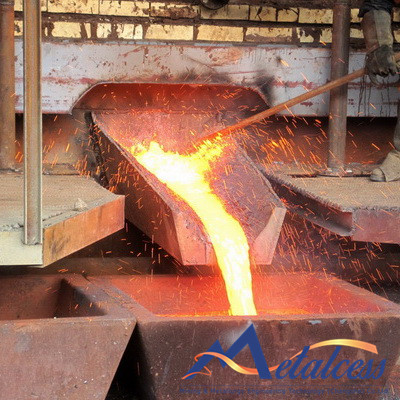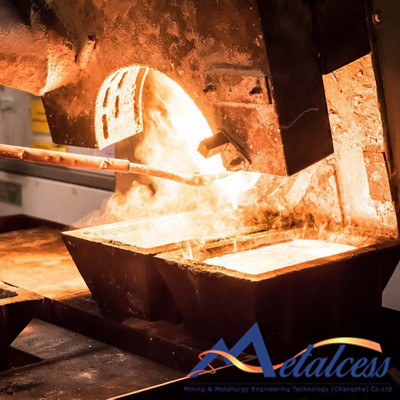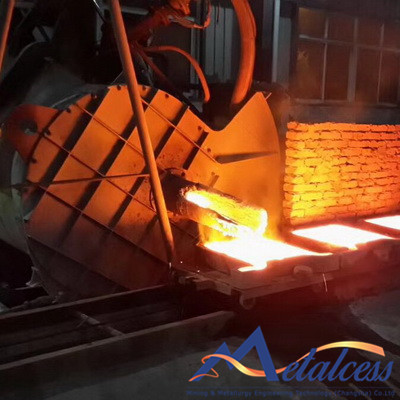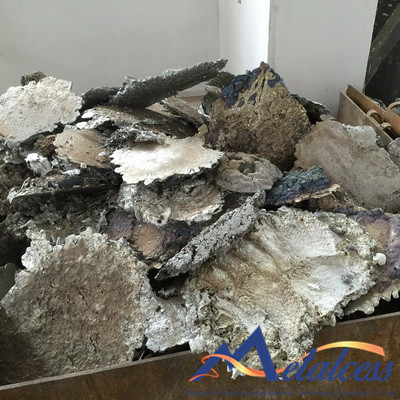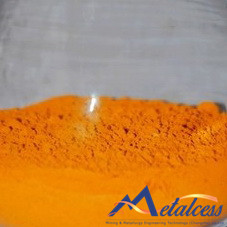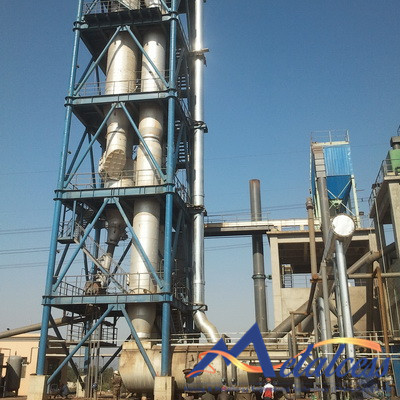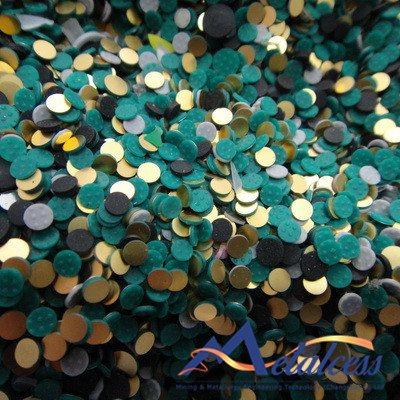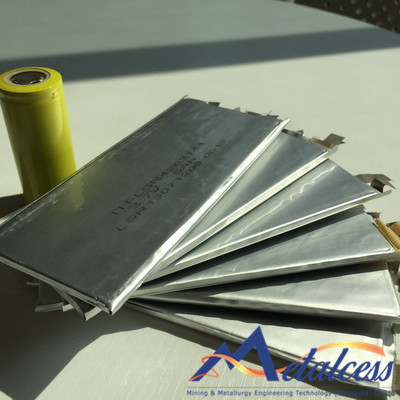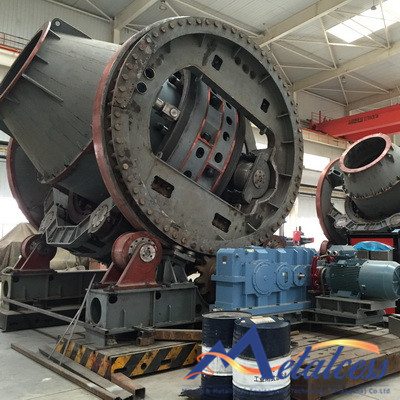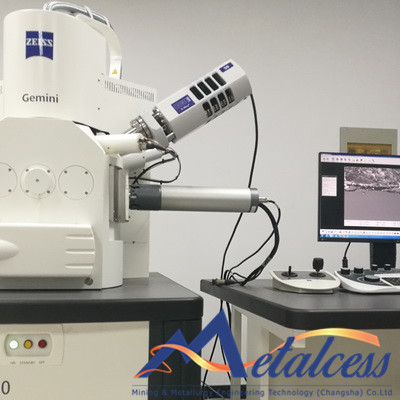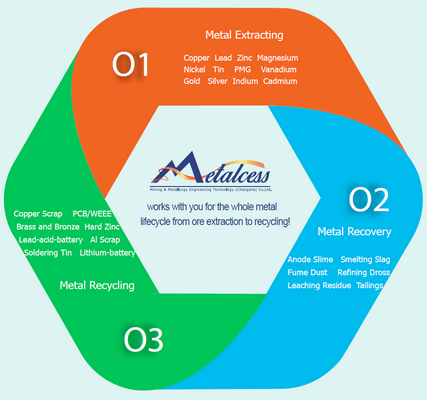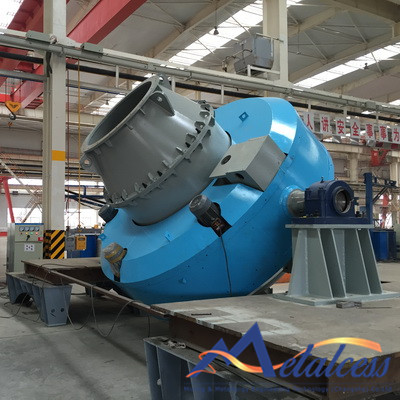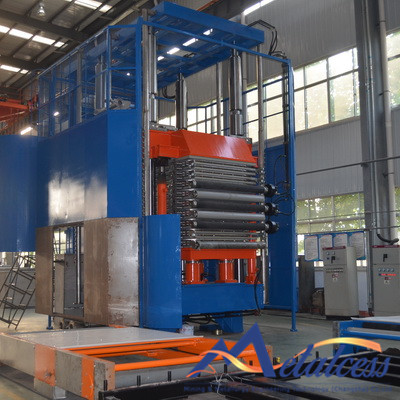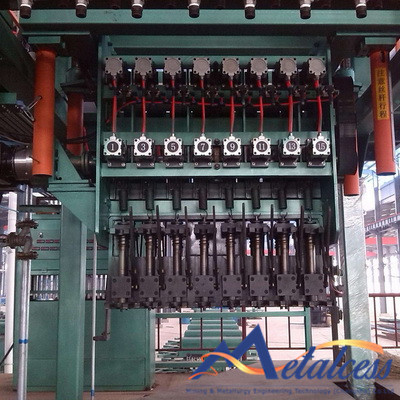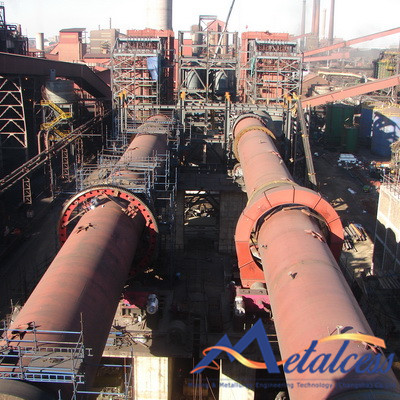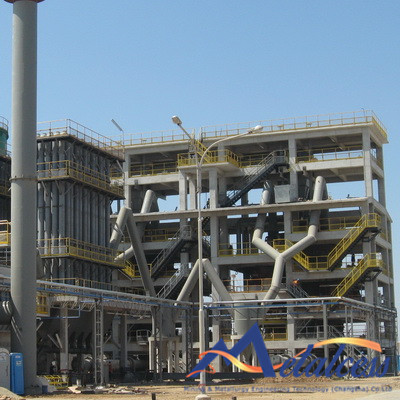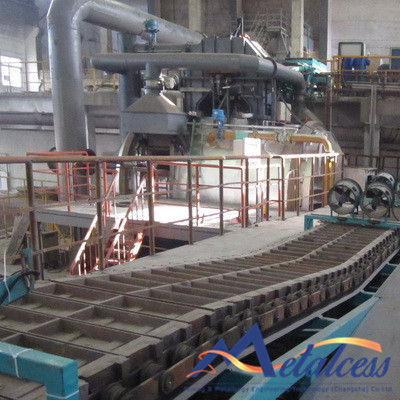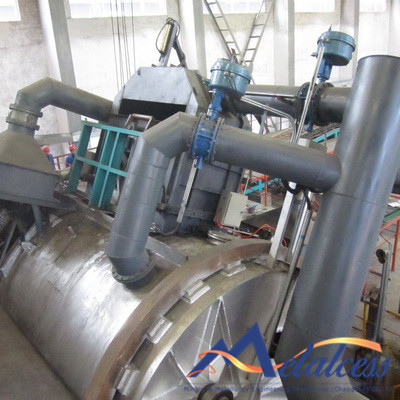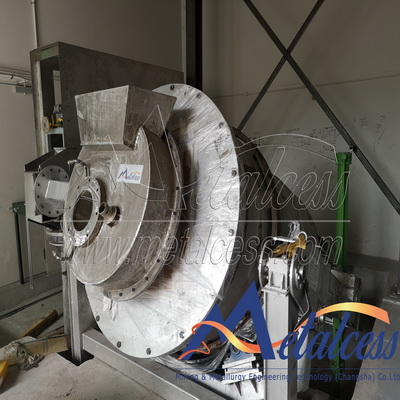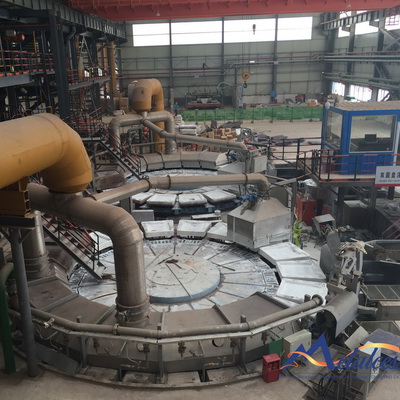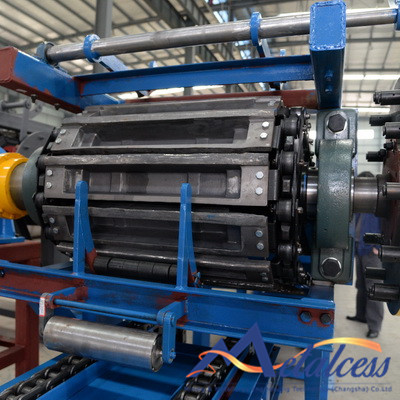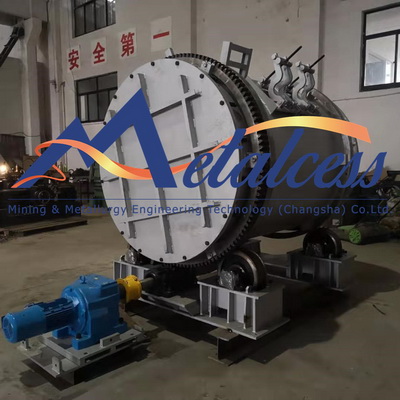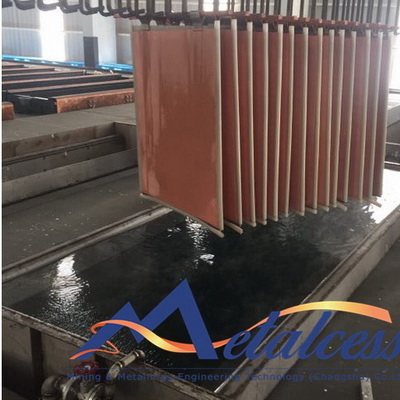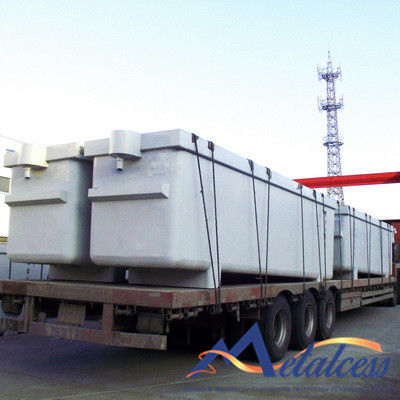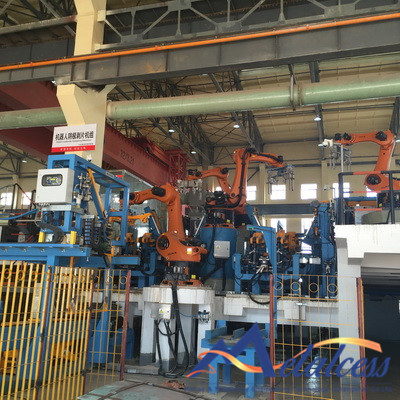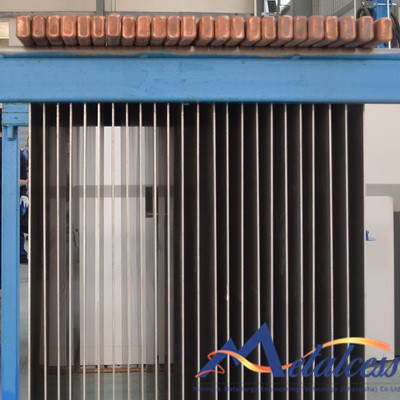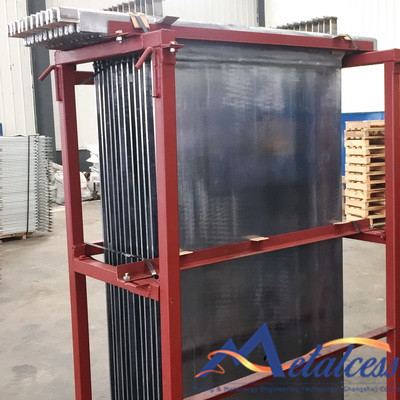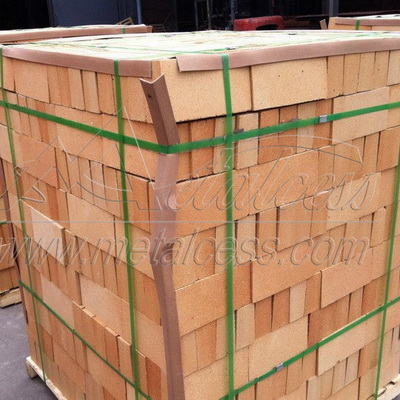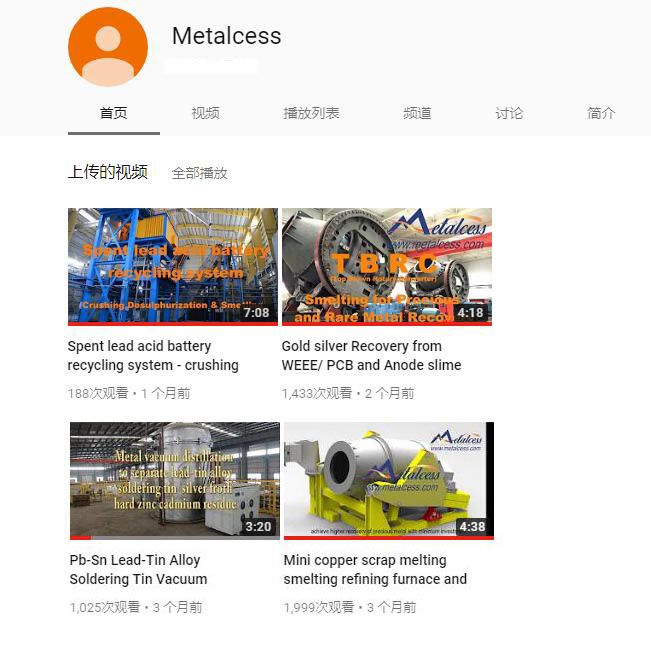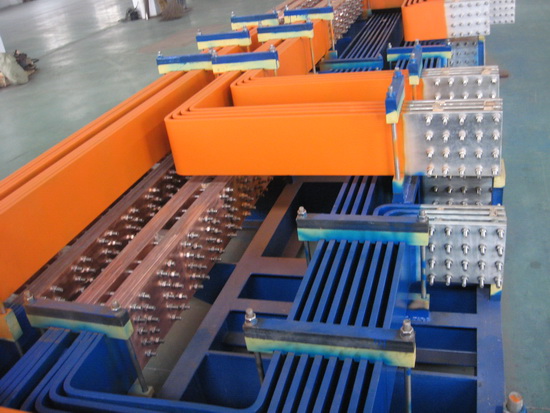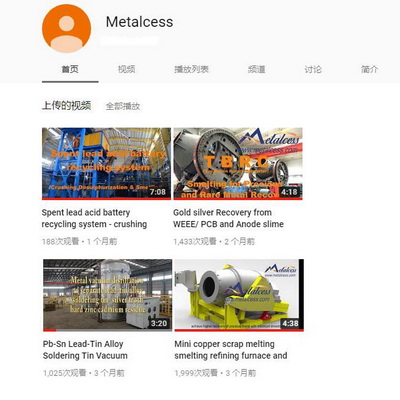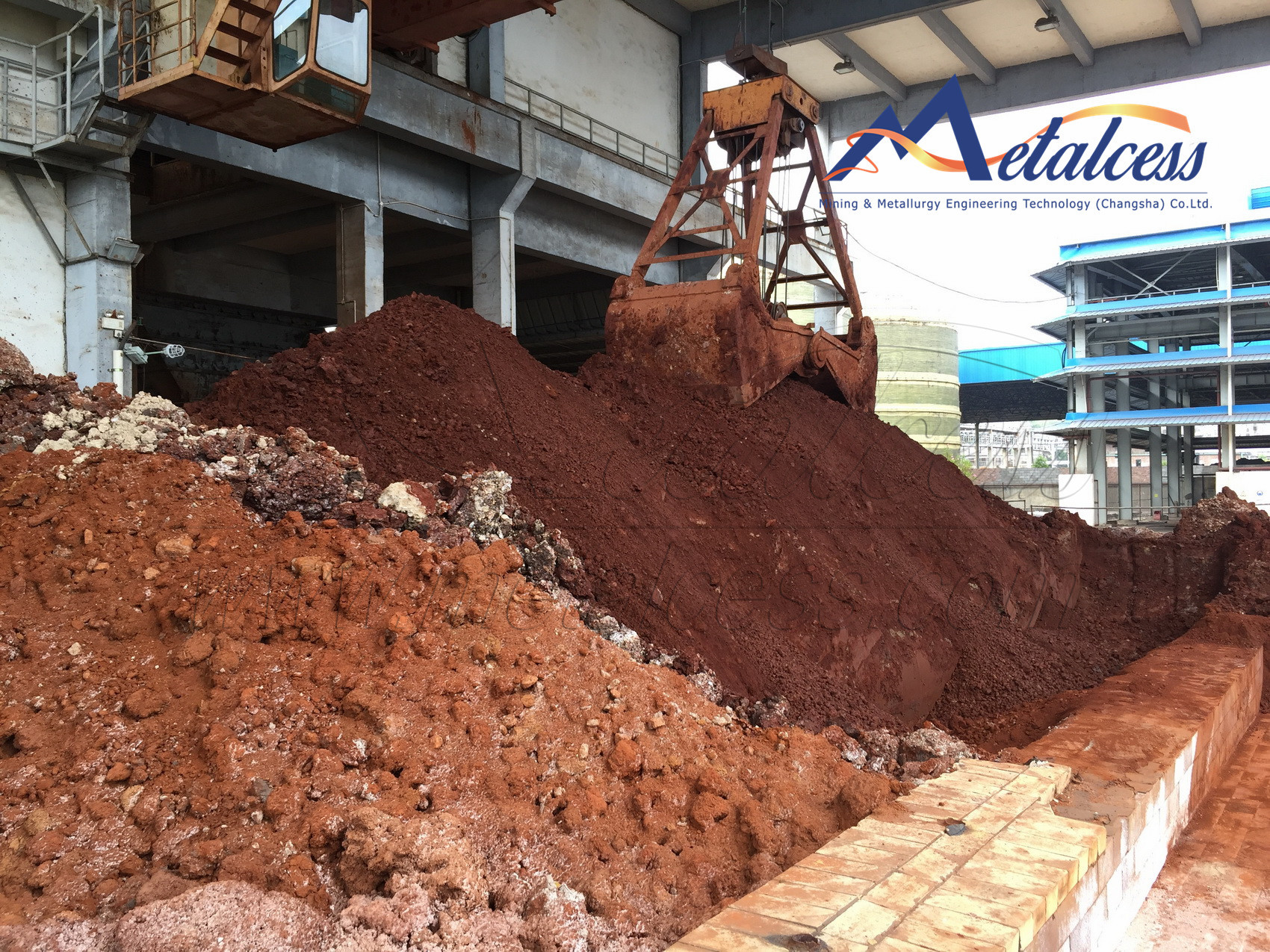In zinc leaching, apart from zinc, iron also dissolves in sulphate system
and exists as iron ions in large quantity, which has to be removed by iron
precipitation. In general, there are three mainstream iron precipitation
methods.
1. Jarosite Precipitation: Removal of iron from sulfate solution as a
jarosite compound where ferric iron reacts with K+, Na+ or NH4+ bearing sulphate to form A2Fe6(S04)4(0H)12 precipitate, which is then removed through filtration separation.
2. Goethite Precipitation: Iron removal includes converting Fe2+ into Fe3+ by injecting dispersed air into high temperature
neutral sulfate solution and forming into goethite compound.
3. Hematite Precipitation: Generating hematite (Fe2O3) precipitate to remove
iron ion from hot acid zinc leaching solution, as a part of the zinc calcine
leaching system. The generation of hematite is performed in autoclave where fresh
steam and oxygen are injected so that the working temperature is increased from
95°C to 200°C and the working pressure is increased to 1.8MPa (oxygen partial
pressure ranging from 0.15-0.25MPa) accordingly. Under such condition, iron
precipitation rate is more than 90%. The hematite residue contains high iron
content (58-67%) and low zinc content (0.5%-1.0%).
By comparing the said three iron precipitation methods, a conclusion is
made as follows:
1.
Jarosite precipitation is rather simple in process
condition and production operation, low production cost. Zinc loss in jarosite
residue is limited. The process generates jarosite that contains 30% iron in
large quantity, which is an unusable slag and has to be solidified and
landfilled at high cost, a challenge to environment and sustainable
development. What’s more, jarosite precipitation also takes away valuable
metals like In, Ga, Ge and etc ..
2.
Goethite precipitation is superior as the residue
amount is only 50% of that by jarosite precipitation. On one hand, the precious
metal In, Ge, Ge can be enriched and precipitated before iron removal. On the
other hand, the goethite residue can be sold as material for cement production
instead of landfilled as hazardous waste.
3.
Hematite precipitation has high iron content and
can be used as raw material for iron smelting. But it proposes high demand in
process and operation condition and the production cost is very high as there
is repeated scaling problem with the autoclave.
Metalcess usually recommends goethite precipitation
for iron removal in zinc hydrometallurgy. To maximize the value of goethite
residue, Metalcess developed flash
magnetization roasting technology in the aim to recycle goethite generated in
the iron removal process of zinc leaching. It can enrich the goethite residue
into standard iron ore for sale. It is the best accessible green solution to
recycle iron at high efficiency but low cost.





